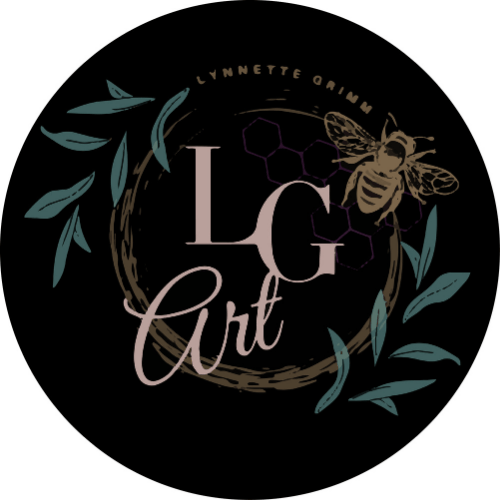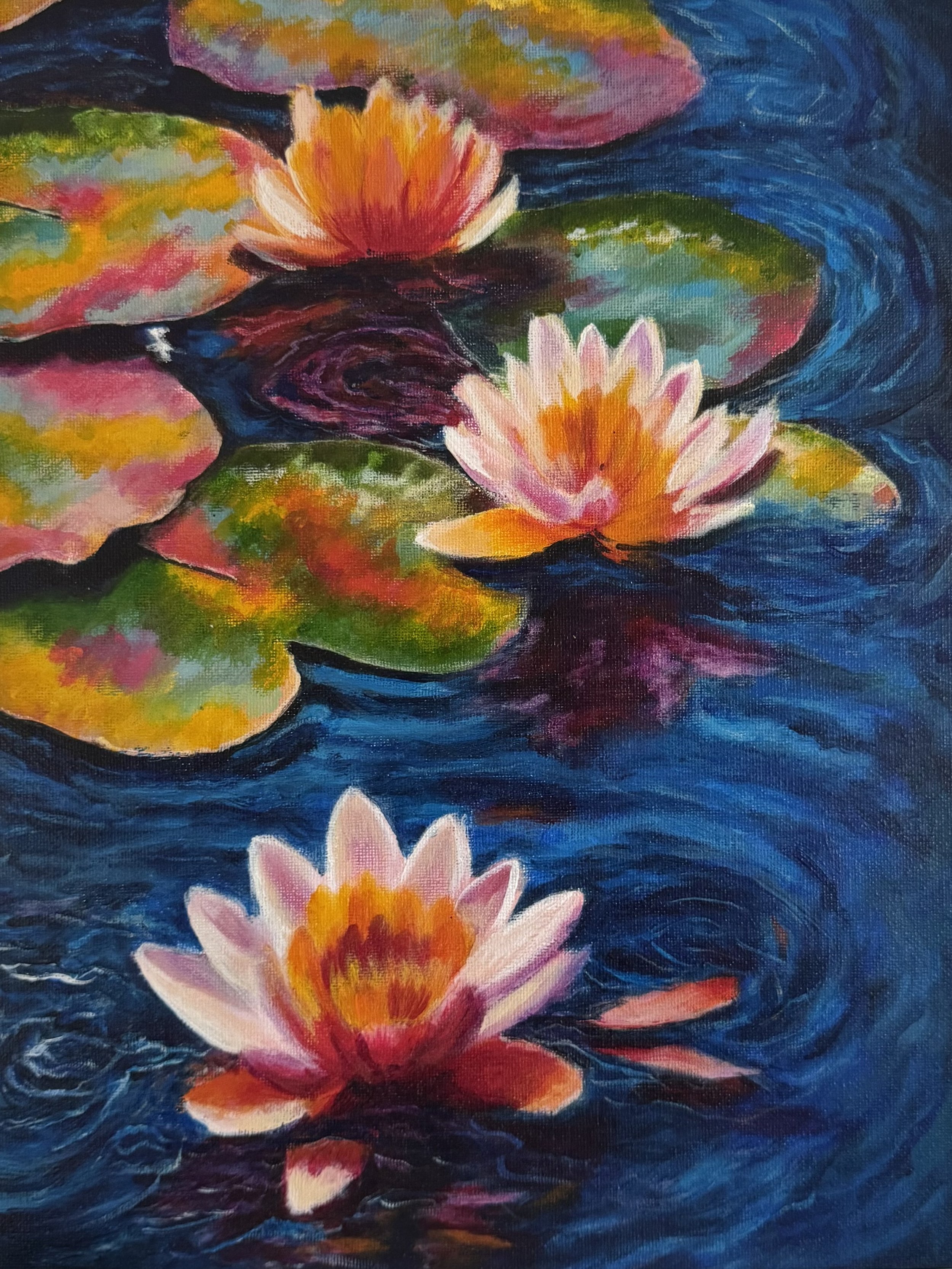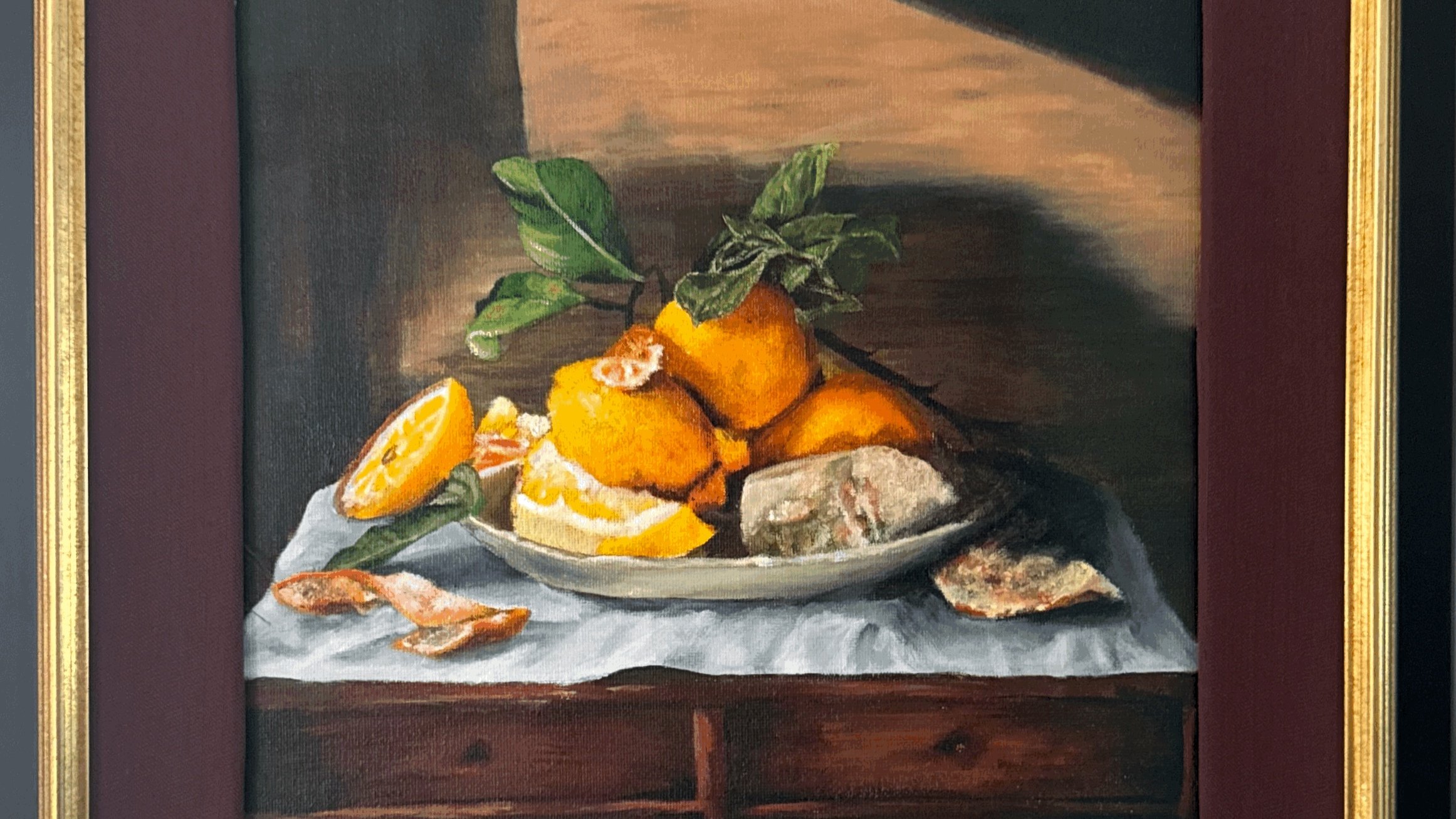Brushstrokes and Battle Cries: Why My Art Is a Protest
My art isn't just about beauty—it's about bearing witness. To the quiet unraveling of identity, to the resilience in decay, to the truth of what it means to inhabit a body that's been politicized simply for aging. I paint to reclaim space, to say the feminine experience is worthy, raw, complex, and powerful—even (especially) when it’s uncomfortable. This isn’t just art. It’s a protest—layered in color, shadow, and truth.
Art has always had something to say. Sometimes it's subtle, like a whisper that lingers. Other times, it’s more of a scream—a full-bodied, paint-splattered roar. I’ve found myself somewhere in between, using my work to speak to something deeply personal yet painfully universal: the feminine experience.
Now, before you picture me standing on a soapbox in a beret with a megaphone (not that it doesn’t sound fabulous), let me clarify. My art isn’t about shouting for the sake of noise. It’s about witnessing. It’s about capturing the quiet unraveling of identity that can come with aging, motherhood, and the slow decay of how society values the female body. It’s about challenging how that narrative gets written—and who gets to write it.
We live in a world where a woman’s body is regulated more than a poorly run HOA. Fertility is worshipped until it’s gone, and then suddenly we’re invisible. Menopause? Hysterectomy? Those words still make people squirm. But I’ve lived them. And instead of shrinking, I decided to paint.
Meditation, 2025
I paint peeling petals and overripe fruit. I paint cracked vessels and tangled blooms. I explore decay—but not as an ending. As a transformation. A shedding. A reclaiming. Because the feminine experience is not a linear path from maiden to mother to forgotten. It’s layered, complex, messy, and deeply, achingly beautiful.
And yes, my work is political. Because choosing to center stories that have been dismissed or overlooked is political. Choosing to say, “This matters. This body. This moment. This grief. This bloom.” That’s activism with a brush.
The Flourishing Reign of Femme (Close Up), 2025
Artists have always been mirrors and windows. We reflect, we reveal, we remind. And I don’t take that lightly. Every time I start a new piece, I think about what I want to say with it. Sometimes it’s soft. Sometimes it’s defiant. But it’s always honest.
Because for me, art isn’t just about beauty. It’s about truth. And truth—especially the kind that centers the voices of women, of queer folks, of those shoved to the margins—is a radical, revolutionary thing.
So if you’ve ever felt unseen, unvalued, or told that your story was too much, too weird, too emotional… same. That’s why I paint. That’s why I share. That’s why I’ll keep going.
Even if the world would rather look away.
The Botanical Renaissance: Painting Femmes, Power, and the Chaos of Creation
Flowers don’t ask for permission to bloom—they just do. They push through cracks, stretch toward the light, spill over fences and sidewalks, refusing containment. They are life-giving, resilient, chaotic, powerful—just like femmes.
In my Botanical Series, I paint flowers not as fragile decorations, but as symbols of endurance, transformation, and defiance. Their petals twist and curl in impossible poses, their roots push through the weight of bricks and concrete, their forms take up more space than the world allows. They are perimenopause, ovulation, pregnancy, menopause—the entire spectrum of femme existence, from first bloom to final petal.
For too long, patriarchy has dictated what is beautiful, what is worthy, what is powerful. But we are reclaiming it. We are in a renaissance of femme identity, of autonomy, of creative and economic power. And just as the classical painters used chiaroscuro to illuminate kings and gods, I use it to highlight us—to carve our presence into history, to demand that we be seen.
This series is a reminder: We have always been the creators, the life-bringers, the ones who shape the world. And no system can stop what is already in full bloom.
There is an undeniable power in blooming. In unfurling. In taking up space.
Botany, at its core, is life-giving—pushing through the soil, reaching toward light, flourishing even in the harshest conditions. It is a cycle of growth, transformation, decay, and rebirth. Just like us. Just like femmes.
This series is not just about flowers. It is about the full spectrum of femme existence— ovulation, menstruation, perimenopause, pregnancy, menopause—from first bloom to final petal. It is about the beauty of bodies in flux, about the chaos of creation and the myth of fragility. Because despite what patriarchy has spent centuries telling us, femininity is not weakness. It is strength, endurance, resilience. It is the ability to create life, to endure pain, to survive, to build, to shape the world. And yet, our power is constantly undermined, dismissed, controlled.
But patriarchy is dying. And like any dying system, it is clinging desperately to its last breath—lashing out, oppressing, restricting, trying to convince us that we are losing, when in fact, we are redefining everything. We are in a renaissance of femme identity, of autonomy, of economic and artistic power. And this series is my way of documenting that moment.
Lush Resilience, 2024 (cropped)
Botany as Femme, Femme as Life-Giving
Flowers have always been used as metaphors for femininity, but always in ways that serve the male gaze. They are depicted as delicate, ornamental, beautiful only in their prime. But what about the flowers that refuse to wilt quietly?The ones that grow wild and unruly? The ones that thrive in cracked concrete, that burst through oppressive structures, that refuse to be tamed?
In this series, my botanicals are not just decorative—they are defiant. I paint them oversized, unruly, taking up space they were never given permission to claim. They bloom in impossible ways, their petals stretching, curling, twisting into something both chaotic and intentional—because what is creation if not both?
Their forms are distorted, exaggerated—mirroring the way femme bodies are treated in society. We are told that we are most beautiful when we are small, contained, youthful, effortless. But real beauty is in the fullness of experience. In the way bodies stretch, expand, contract, bear weight. In the way hormones shift, blood flows, skin changes. In the way we endure.
The Fruits of our Labors, 2024 (cropped)
Chiaroscuro: Light and Shadow as Power
I use chiaroscuro in the same way the classical painters did—to highlight what is important, to carve out space for the subject, to force the viewer to see. The Renaissance masters used light and shadow to emphasize strength, divinity, importance. They reserved it for gods, kings, figures of power.
I am using it for us.
In my paintings, light falls onto femme bodies, onto botanical forms, onto the raw physicality of creation and transformation. I use shadow not to diminish, but to define—to give depth, to highlight the weight of existence, to show what has been hidden.
Femmes have spent centuries in the shadows—our stories, our histories, our pain, our triumphs. But light belongs to us, too.
The End of Patriarchy, The Rise of Femme Power
The reason we are seeing a surge in oppressive policies, in violence against femmes and marginalized communities, is because we are winning. We are stepping into our power, claiming our space, building our own systems. The patriarchy is crumbling, and it is terrified.
This series is about that moment. The moment before change fully arrives. The moment where old structures try to hold on, but the roots are already pushing through, the blooms are already bursting open, the vines are already climbing the walls.
I paint to capture this transition, this chaos, this power.
This is a renaissance of femme identity.
This is a reclamation of beauty on our own terms.
This is the resistance in full bloom.













